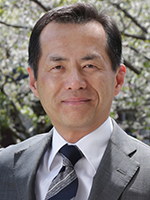Dear friends and colleagues,
I would like to express my sincere appreciation for the efforts that I am sure you are making amid this unprecedented disaster. It may be a little indelicate given the circumstances, but I would like to announce on behalf of the Association that our 38th annual meeting will be held on May 20 (Thursday) and 21 (Friday), 2021 in Nagasaki City at the Nagasaki Brick Hall and Astopia, Nagasaki Shimbun Cultural Hall.
We previously held the 8th annual meeting (hosted by the late Professor Masao Tomita) and the 19th annual meeting (hosted by the late Professor Hiroyoshi Ayabe) in Nagasaki, and the 38th will be our first meeting there in about 20 years.
There has recently been a worldwide push to implement the United Nations' Sustainable Development Goals by the year 2030, and many efforts to this end are being made in the field of medicine.
We have therefore made the theme of our 38th meeting Sustainability in Chest Surgery, and we hope to discuss with attendees the sustainability of our field and the new possibilities that we see unfolding in next decade.
In recent years in the field of chest surgery, new modalities have evolved from VATS, such as RATS and single-port VATS, thoracoscopy has begun to be used for complicated procedures such as segmentectomy and bronchoplasty, and adjuvant therapies such as immune checkpoint inhibitors and molecularly targeted drugs are seeing increasing use. One difficult problem that we now face, however, is how these therapies should be combined in practice. Another issue is how we can apply the results of fundamental research in a clinical setting. Moreover, as interest in medical innovation continues to grow, there is an increasing demand not only for the improvement and refinement of established techniques and technologies, but also for the creation of new concepts and the establishment of new treatments that actively incorporate the latest technologies.
The image on our promotional poster contrasts present-day Nagasaki with Nagasaki at the end of the Edo period. During Japan’s isolationist years under the Tokugawa shogunate, the island of Dejima in Nagasaki Harbor was Japan’s only connection with the outside world. Through the island, Dutch physicians introduced surgical instruments and other medical equipment, which spread widely throughout the country. Even today, one can find modern medical instruments in use which so closely resemble their Edo-period ancestors as to be almost identical. Having survived 160 years of history, this truly exemplifies sustainability.
We are presently collecting material that deals with fundamental and clinical issues across a broad spectrum of relevant topics, and are preparing a program for the symposium and lectures replete with fresh and original content. We hope to create a candid atmosphere in which chest surgery specialists can freely exchange ideas.
Nagasaki, being at the very western end of the main Japanese archipelago, is a little far to travel to, but offers sights and delicacies attractive enough to make the journey worthwhile.
We are all doing our utmost to make the next conference a productive one, and we eagerly await your participation.
Until we meet again, I wish you all the best of health.
Yours sincerely,
| Takeshi Nagayasu, MD,PhD. Congress President Professor and Chairman, Department of SURGICAL ONCOLOGY Nagasaki University Graduate School of Biomedical Sciences |
 |



